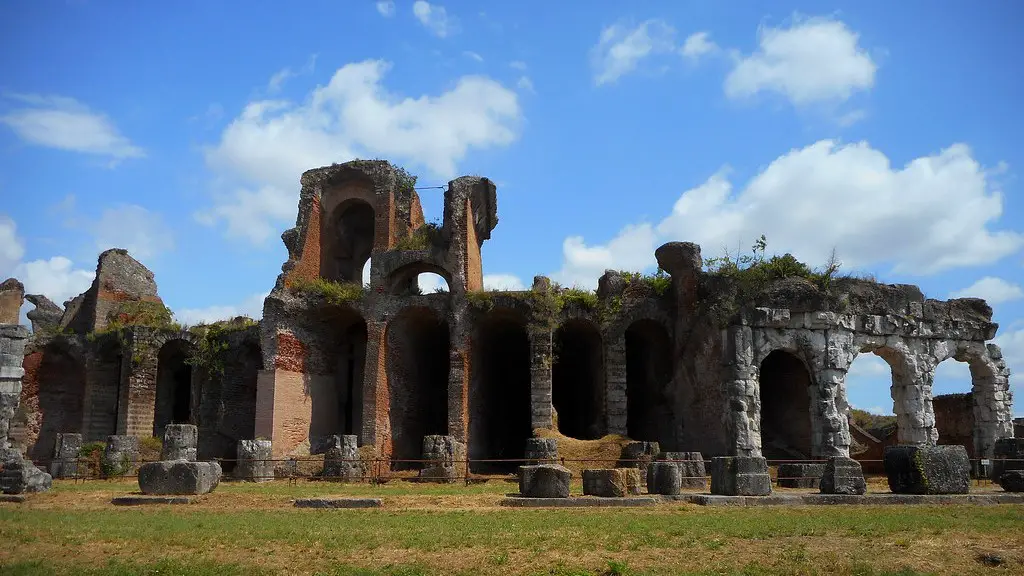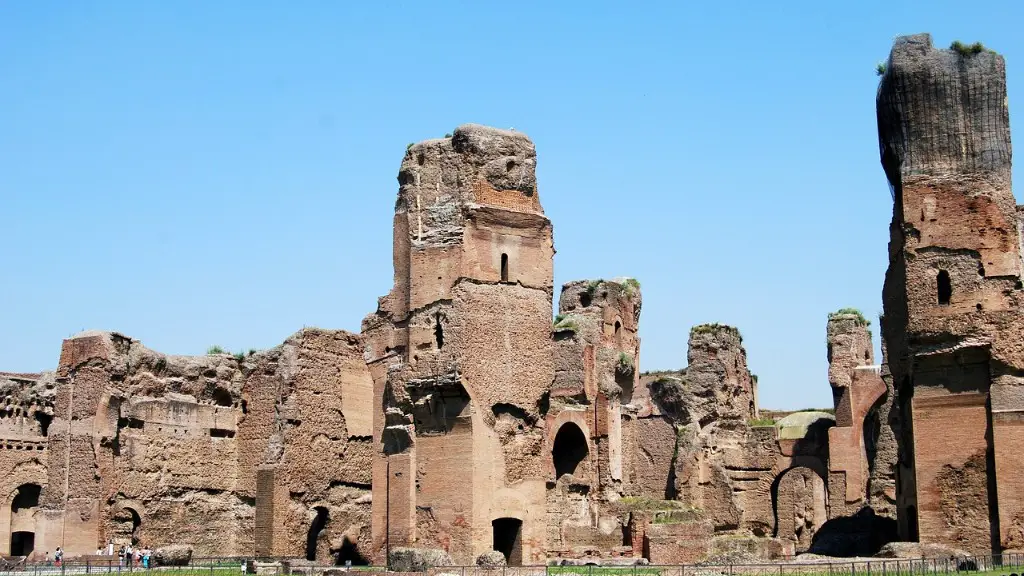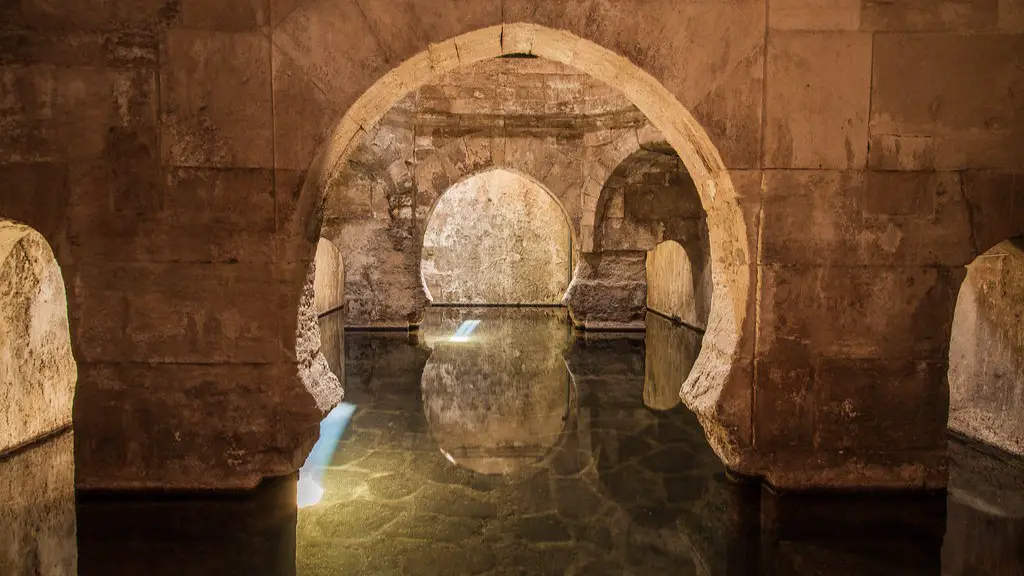Introduction:
Technology was an essential part of ancient Rome. Even though the actual term “technology” was not used until relatively recently, people in this period developed a variety of techniques and tools to improve their lives. This is reflected in the impressive accomplishments of Roman engineering and architecture, as well as their application of mathematics and science. Ancient Romans also had access to advanced tools for communication, farming, and warfare. By looking at ancient Rome’s use of technology, we can gain insights into these cultures and the resourcefulness of their people.
Aqueducts:
Aqueducts were one of the most visible examples of Roman technology. These bridges and pipe systems allowed water to be piped in from springs and rivers up to 30 km away. This not only allowed Roman cities to have access to running water and to maintain public spaces such as bathhouses, but also enabled them to have complex plumbing systems that could carry wastewater away from populated areas. This enabled them to maintain high levels of public hygiene, which greatly reduced the incidence of diseases.
Roads and transportation:
The roads built in ancient Rome were a major innovation in transportation technology. These roads were built in a very systematic manner, and allowed for rapid movement of armies and people over long distances. These roads led to the creation of a vast transportation network, which enabled Rome to gain control over vast territories. This transportation network was a key factor in Rome’s success as a superpower.
Architecture:
Roman engineering and architecture were both highly advanced. They built large, impressive structures such as the Colosseum, the Pantheon, and the aqueducts. They also built large public baths such as those found in Pompeii, as well as complex urban sewer systems. In addition, they constructed a variety of bridges, aqueducts, and other engineering projects.
Tools and weapons:
The ancient Romans had access to a variety of tools and weapons. This technology allowed them to build large structures, as well as to defend their cities. Some of the most popular weapons used by the ancient Romans were swords, spears, bows and arrows, and javelins. They also created a variety of siege weapons such as catapults and battering rams.
Agriculture:
The ancient Romans were also experts in agriculture. They had developed a variety of tools to improve the yield and productivity of their farms. These tools included various implements for tilling and sowing, as well as water pumps and windmills to power mills for processing grain. They also used a variety of animal-powered tools to make farming easier.
Communications:
In addition to these physical tools, the Romans also had an advanced communications system. They developed a system of post roads, which connected the various cities and regions of the Roman Empire. These roads allowed for the rapid movement of letters and messages. They also developed a system of beacons, which could be lit to alert military commanders of approaching danger.
Mathematics and science:
Finally, the Romans were also very advanced in their mathematics and science. They had developed a variety of theories and mathematical systems, as well as a system of measurements. They were also keen observers of nature, and were able to explain the workings of natural phenomena such as the tides and eclipses. This knowledge allowed them to make significant advances in the fields of medicine and architecture.
Infrastructure:
The infrastructure created by the Romans was an important part of their success. This infrastructure included roads and aqueducts, as well as an efficient postal system and public buildings such as forums and basilicas. This infrastructure enabled the rapid expansion of the Roman Empire and the unimpeded movement of goods, people, and ideas.
Military:
The military was another area of technology that was highly advanced in ancient Rome. The Roman army used a variety of different weapons and tactics to gain an advantage over their enemies. Some of these included the introduction of cavalry, the use of siege weapons, and the building of walls and fortifications to protect their cities.
Citizenship:
The ancient Romans also used technology to ensure the loyalty of their citizens. Through the granting of citizenship, citizens could benefit from a variety of rights and privileges that would otherwise have been denied them. This allowed Rome to increase the number of people devoted to the empire, as well as ensuring the loyalty of their citizens.
Construction Materials:
One of the major technological achievements of the ancient Romans was their ability to create a variety of different construction materials. This included concrete, which enabled them to build much larger and more durable structures. They also developed new materials such as mortar and bricks, which allowed them to build even larger structures.
Technology & Social Control:
The Romans also used technology to maintain their social control. They developed a variety of surveillance tools such as espionage, propaganda, and surveillance technologies to keep citizens in line. They also had access to weapons and surveillance tools to enforce their laws. This allowed them to effectively maintain control over their citizens.
Law & Administration:
The Romans also developed an advanced legal and administrative system that was based on technology. This system enabled them to manage their vast empire efficiently, and to efficiently administer justice to their citizens. This system was based on a variety of different technologies, including the written word, databases, and even computers.
Conclusion:
Overall, technology was an essential part of ancient Rome, and enabled them to become one of the most powerful empires in the ancient world. Their use of technology enabled them to dominate their enemies militarily, maintain control of their citizens, improve their infrastructure and transportation, and even advance their knowledge of mathematics and science. The accomplishments of the ancient Romans show us just how resourceful and advanced their people were.



